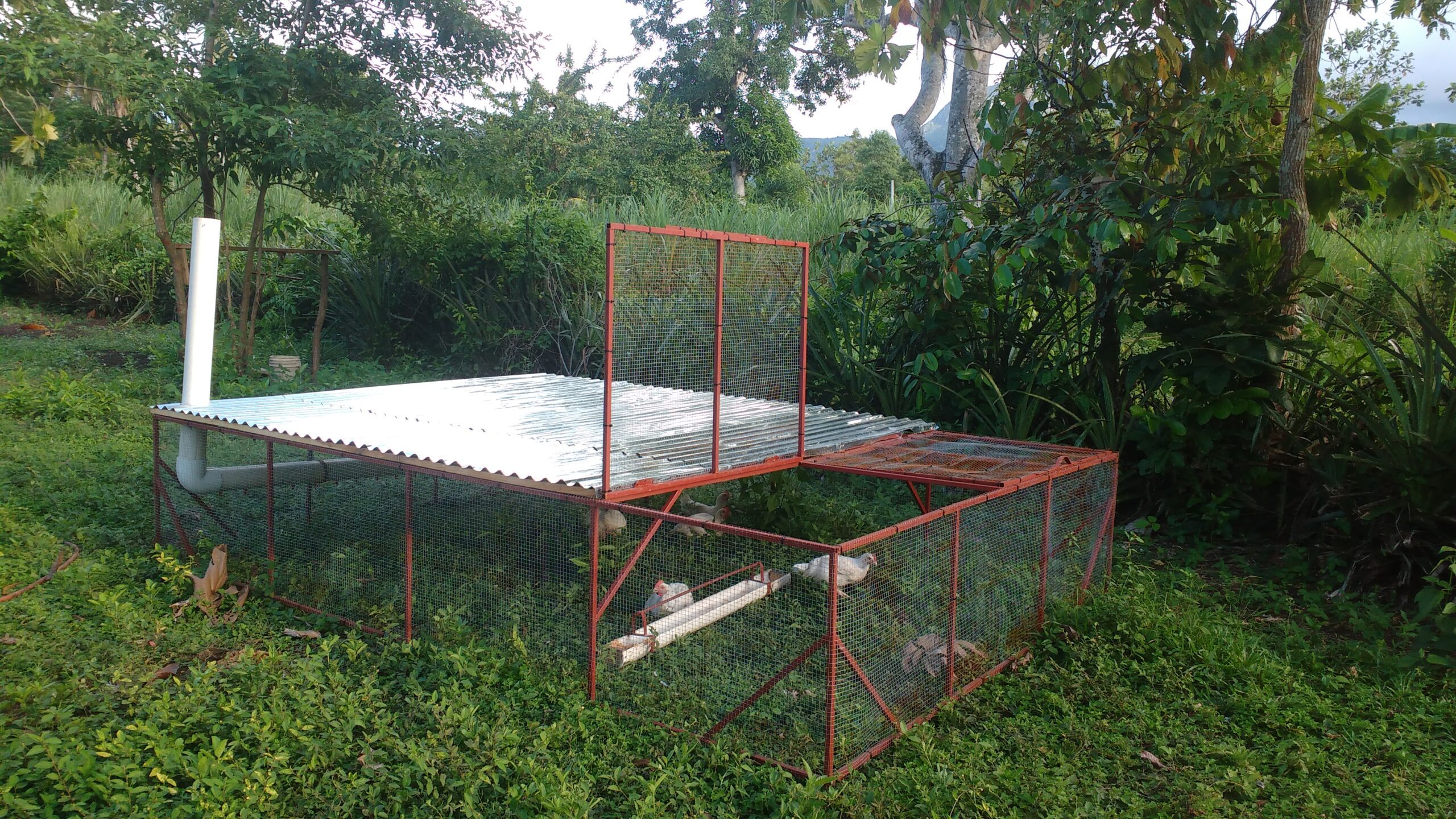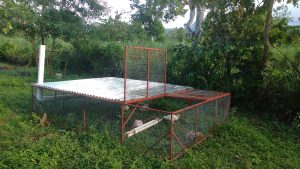
By now you’ve probably heard us use the phrase “Chicken Tractor” a time or two. You may be wondering what exactly this means. What is it that makes a chicken tractor different from a typical chicken coop? Well we are glad you asked!
Today most chickens are raised in a 600 ft long Commercial Chicken House which can commonly hold up to 46,000 chickens each. As you can imagine, having this many chickens in one small location can be problematic. If one chicken gets sick, they typically all do. As a way to combat this, farmers routinely give their chickens antibiotics, which we as the consumers then indirectly end up eating. Many chickens never see the light of day.

The chickens raised on the New Roots Farm however will be raised in small chicken tractors, which are movable coops. Each morning our employees and interns will advance each chicken tractor 12 feet. This will ensure that everyday the chickens have access to a fresh set of grass. No coops will return to this specific area for a minimum of 60 days, which will allow the pasture sufficient amount of time to regrow. Each day the chickens are depositing their fertilizer on the ground. This is incredibly important here in Haiti as much of the land is depleted of important nutrients. By depositing this natural fertilizer onto the ground, we will see that the health of our pastures are quickly being revitalized, which will allow us to have better crop yields.

Since our chickens are outside in the fresh air, eating grass and bugs (as well as feed), they will be significantly healthier than those being raised in the Commercial Chicken Houses. We therefore will have no need to give our chickens antibiotics. Because of their diet, they will also taste a lot better!
So how does the chicken tractor work?
We will be using two types of chicken tractors, one for meat chickens and one for the layers. The meat chickens will be raised 8×12 foot tractors. There will never be more than 65 chickens in each one. As stated above, these tractors will be moved every morning to fresh pasture.
 Homemade Waterer
Homemade Waterer
Our layers, will be raised in what we call a Portable Egg Mobile. It will be moved every 2 weeks around the pasture as moving everyday would be too stressful for them and would result in a decrease of production. They will have 3,000 sq ft of pasture surrounded by an electric poultry net to keep them in and predators out. Once we are up to capacity, these pens will hold up to 200 layers.
Ideally, after having the chickens on a plot of land for a year, the ground will be very full of nutrients and we would then switch to growing crops for a season. We can continually run 5 chicken tractors on each acre of land. We should be able to profit $10,000 from each acre every year. New Roots will use the income from this to cover as much of our operating costs as possible. Our goal is to eventually be able to have enough income so that we can cover the costs of our programs self sufficiently. It will of course take a few years to get to this point.
 Homemade Feeder
Homemade Feeder
Yes, raising chickens this way is very labor intensive, however we believe that this is the best model possible for Haiti. It’s something that is very scalable. It’s works great for small farmers like our interns who may only be able to start with one tractor, but will allow them to grow as needed. In addition, the revitalizing of the soil is an element that is needed so badly here. Most importantly, our interns/graduates, will have the opportunity to profit an estimated $160 a month. Since the average YEARLY salary here in Haiti is approximately $350, this will set each intern on the path way out of poverty!
Can you tell that we are a little bit excited about the endeavor we are about to take on?